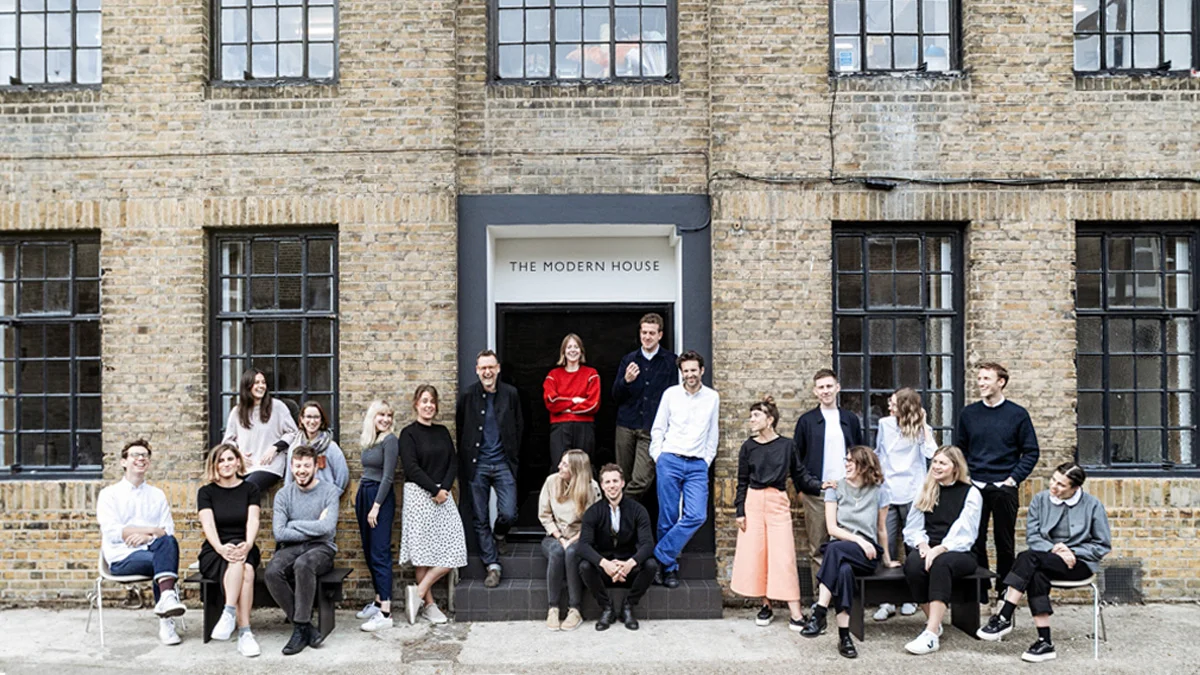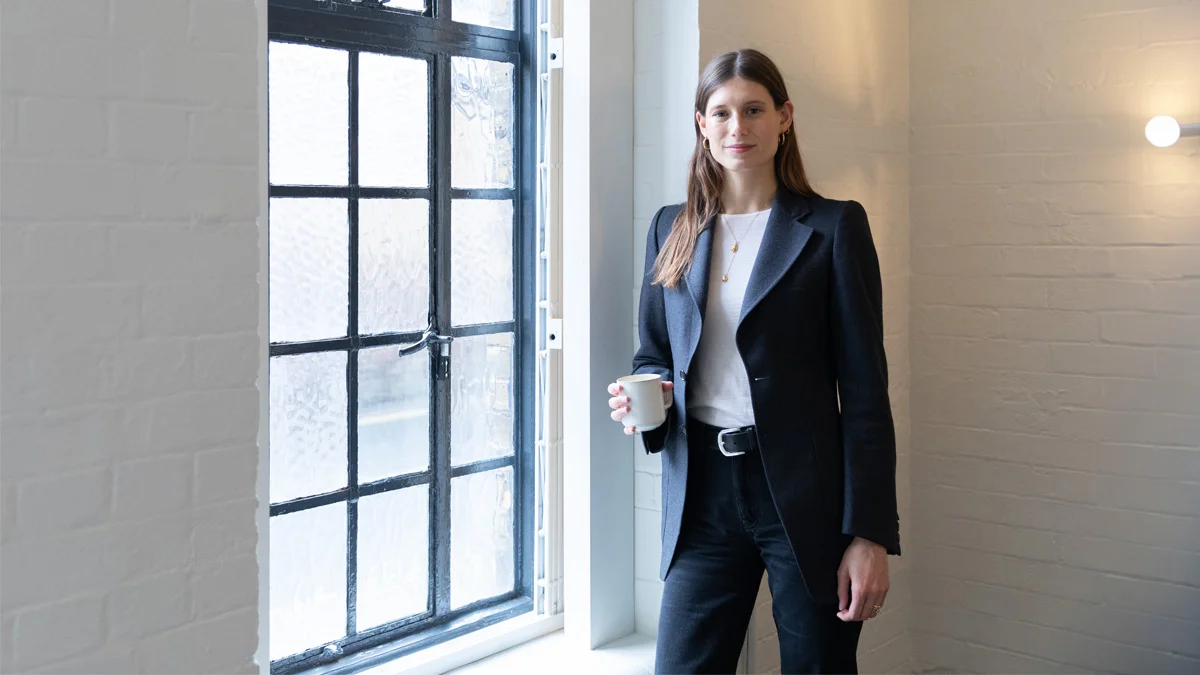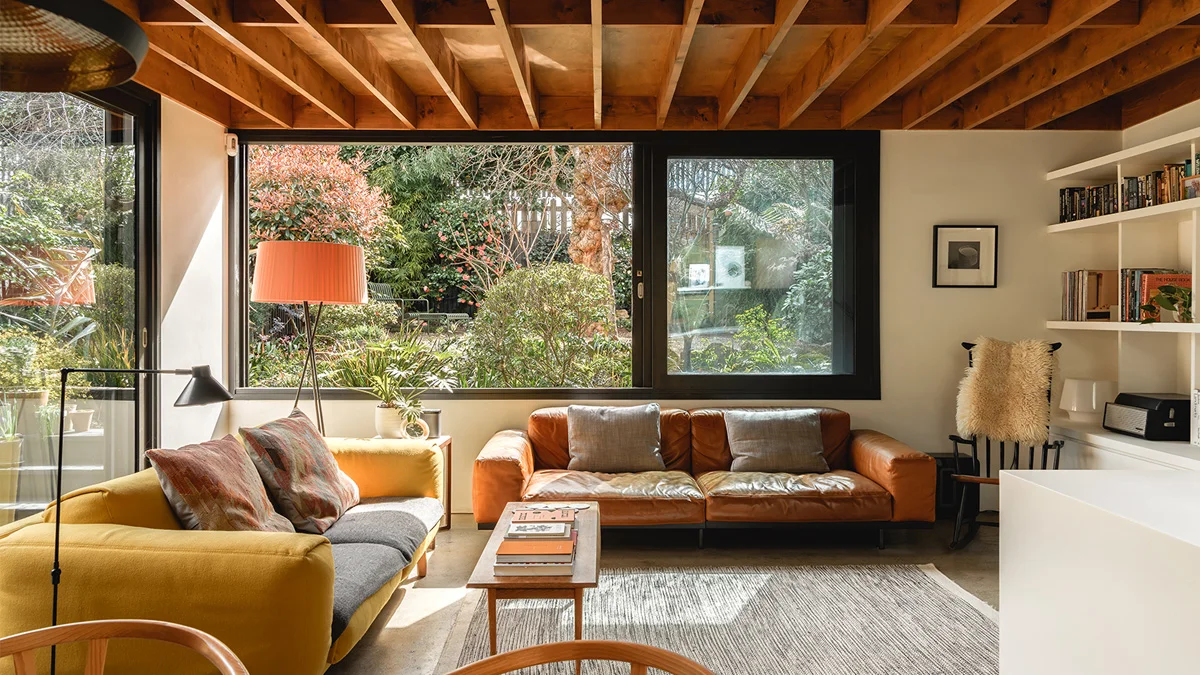
“There are not enough poets who go into business,” began Clem Hobson, MD of The Modern House. “That’s what appealed to me about taking up leadership of The Modern House. That, and the challenge of designing and building a business that grows, thrives and leads a niche in this highly fragmented industry.” And Hobson has a secret weapon that will help her achieve just that.
A crowded, noisy, fragmented market
The UK residential real estate industry is highly competitive. Over 25,000 agencies facilitate about 1.2 million transactions worth over £300bn annually. The sector's nature amplifies competitiveness, driving many approaches to securing mandates from sellers and deals from buyers. In this two-sided market of home sellers and buyers, the transaction puts food on the table of the 120,000 agents and brokers, engendering fierce competition and co-opetition to get deals done.
Leveraging a design heritage to craft a distinguished brand
“We have differentiated ourselves through two acts,” began Hobson. “First, we only work with owners of architecturally significant homes that offer design at their core. This is found in the property's design approach to space, light, nature and materials. These homes stand out; their owners care deeply about their living spaces and places. Next, our team of 65 across the country love and appreciate design. This love translates into our service approach in facilitating seller and buyer marriage.”
This is proven by the 100 per cent buy-sell success rate. She continues: “Sellers want the design features and what informed them to be shared with interested buyers. It’s motivated by a combination of love and pride and why the home deserves a slight premium on just another, for example, three bedrooms, two bathrooms, kitchen, lounge, family room, off street parking alternative.”
The Modern House has built a media-led approach to the market to attract buyers with a design at the centre of their buying decisions. With 50,000 beautifully, thoughtfully curated photos and videos across their 1 million Instagram, 260,000 YouTube, and 70,000 Facebook followers, they have entrenched their positioning in this noisy, crowded marketplace.
“We have so many architects and interior designers subscribed across our accounts,” she says. “It’s a testament to the massive content library we have developed, and it came about because of the co-founder's history.”

Albert Hill and Matthew Gibberd, former journalists and architecture and design interior nerds, wanted to solve two problems: the design was never considered when buying property, and significantly lift the experience of selling and buying a home for clients that loved their homes. They were not property brokers or agents to start with.
When I feel understood, I care to understand what you offer me. This should be every business owner's mantra. The rich, thoughtful, beautifully curated media content creates a deep resonance with sellers and buyers, with design at the core of their needs, wants, and aspirations. “62 per cent of all our business comes from subscribers to our content. The rest come through referrals and platforms like Zoopla and Rightmove that’s used across the industry,” Hobson confirmed.
Doubling down on a winning formula
“I want us to double down on our positioning,” Hobson says. “That and get rid of our lumpy revenues.”
Two seasons drive property sales and create a bumpy revenue cycle. It is a roller coaster ride for any leader trying to invest and grow.
Across the UK, the average tenure of a homeowner varies, but recent data indicates that homeowners typically stay in their properties for around 16 years. Various factors influence this tenure, including age, financial stability, family needs, and market conditions.
Older homeowners, especially those aged 55 and over, tend to stay longer, often owning their properties outright. Younger homeowners, particularly those between 25 and 34, might move more frequently, influenced by career changes, starting families, or upgrading their living conditions.
The job is to locate The Modern House brand front-of-mind for future sellers and buyers. Successful collaborations are key, but establishing the right ones is not trivial. The traditional approach would be to align with property agents that secure seller mandates for homes that meet the modern home positioning. Then, there is the negotiation around marketing and presenting the home, typically the selling-mandated agency cost.
The Modern House invests substantially above the norm to show their homes. Photography is essential in telling the story of the home, and they take many, not only of the home but also of the design features that communicate and bring to life the story of the home through design.
Tackling the lumpy revenues invites so many opportunities. Hobson says, “We have considered creating a design academy using our content and specialist focus on architectural and interior design expertise. We have also considered offering rentals as an add-on to the buy-sell transaction.”
Leadership is about many things. It’s primarily about setting a vision and working with a team to manifest it. Hobson’s history of leading a commoditised service with 10,000 subscribers to 1.7 million makes her the right person in the right place at the right time.
Where is it going right?
Hobson has numerous options to tackle the challenges of dominating the niche of architectural and design homes and smoothing out the lumpy revenues inherent in the industry.
The key is to focus investments to strengthen The Modern House's unique positioning and resolve these revenue fluctuations. Applying Newton’s formula for momentum, p=m.v (momentum = mass multiplied by velocity) holds the key. In your business, mass amounts to a leader’s time and attention and where resources are applied.
More of it on a simple, clear objective creates mass as opposed to it being distributed and spread across many objectives. Velocity is the cumulative effect of building speed in a single vector, a single direction to a single destination.

The Modern House can enhance its offerings through VR and AR experiences, sustainable design consulting, design influencer partnerships, educational programs, home renovation project management, and curating art and design exhibitions. Additionally, branded content, real estate investment advisory, custom furniture, and smart home integration services can further solidify its position in the design space.
Trying to be everything to everyone in a fragmented market dilutes brand strength. Newton’s formula highlights that focusing on a single point of difference, amplified by cumulative, aligned actions, creates unstoppable momentum. This focused strategy helps build a strong brand experience, which is vital for standing out in a commoditised industry.
The Modern House is well-positioned within the architectural and design niche, capturing the hearts of its audience. To deepen this connection, new initiatives should align with the brand’s core values, enhancing the overall customer experience. Offering holiday rentals of architecturally significant, design-led homes can entrench the brand further while smoothing revenue cycles.
People who appreciate design and architecture and purchase homes reflecting these qualities are highly likely to respect and value holiday rentals that exemplify the exact attributes. This approach also feeds future residential stock and leverages existing customer bases for quick wins, addressing brand depth and revenue stability.
Physics is poetry in how it enables the manifestation of our ideas. The Modern House is a company embracing both.
Growth Engines showcases remarkable yet frequently under-recognised business owners who collectively form the basis of our economic engine and whose entrepreneurial fortitude creates a more inclusive and prosperous Britain. It shares their journey, highlighting hard-earned insights and lessons on overcoming challenges and driving business growth.
Its creator, Pavlo Phitidis, is a founder of Aurik, a business scale and growth execution platform for established business owners. He also speaks internationally and authored two books: Sweat, Scale Sell: Build Your Business into an Asset of Value and Reset, Rebuild, Reignite: Turning Crisis into Opportunity
Related and recommended
Richard Harpin, the founder of HomeServe and Growth Partner and owner of Business Leader, answers your burning business questions
Contestants from The Apprentice reveal the fundamental business lessons they learned from taking part in the TV show
From global talent pools to AI-powered documentation, a work-from-anywhere model is a new way of thinking about productivity, innovation and teamwork
The story of how cycling brought Business Leader member John Readman together with his co-founder and investors




